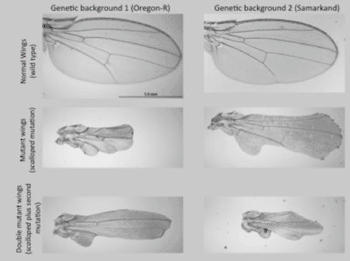An Organism's Genetic Background Influences how Mutant Genes Are Expressed
By LabMedica International staff writers
Posted on 19 Aug 2013
Expression of a phenotype caused by a mutation in a gene or set of genes is heavily influenced by interactions among the other genes that make up the genome of the organism.Posted on 19 Aug 2013
Investigators at Michigan State University (East Lansing, USA) worked with the fruit fly Drosophila melanogaster, an intensively studied model system for human genetic interactions.

Image: By focusing on fruit fly wings and a genetic mutation that alters them, Michigan State University researchers demonstrated the influence of wild type genetic background was actually quite common (Photo courtesy of Michigan State University).
They focused on a genetic mutation that alters the shape of fruit fly wings and discovered that about 75% of the time the individual fly's wild type genetic background affected the expression of the mutated gene. This finding was published in the August 1, 2013, online edition of the journal PLOS Genetics.
"It has been known for a while that genetic mutations can modify each other's effects," said senior author Dr. Ian Dworkin, associate professor of zoology at Michigan State University. "And we also know that the subtle differences in an individual's genome—what scientists call wild type genetic background—also affects how mutations are manifested."
Many disorders with a suspected genetic component, such as cancer, asthma, or Parkinson's disease, have been linked to interactions between more than one set of genes. "Is it just the two pairs of genes that are interacting?" asked Dr. Dworkin. "Or is it that the two genes are interacting and then many other genes are modifying that reaction? This will help us understand how much complexity is involved."
Related Links:
Michigan State University









 Analyzer.jpg)



